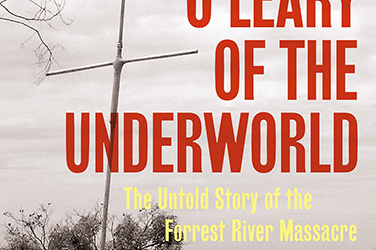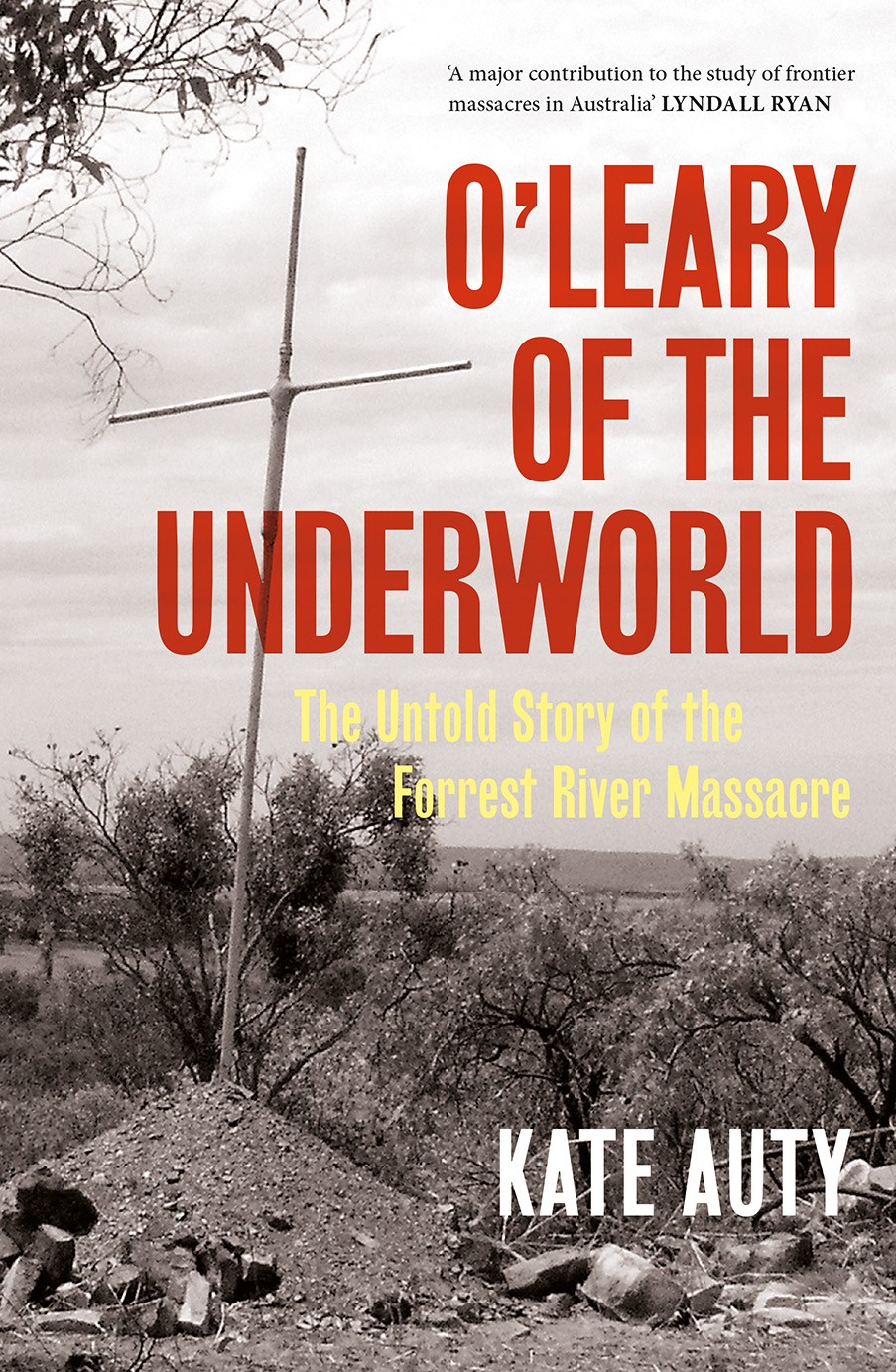
- Free Article: No
- Contents Category: History
- Review Article: Yes
- Article Title: Invitation to remember
- Article Subtitle: A massacre in Western Australia
- Online Only: No
- Custom Highlight Text:
This is no ordinary history book. It is in part an account of a massacre and in part a biographical study of one of the perpetrators, Patrick Bernard O’Leary, yet it reads more like a novel, or a prosecutor’s statement in court, than like a conventional history. It is a truly angry book, full of rage at the fact that the perpetrators of a massacre were never brought to justice, rage at the justice system’s treatment of Indigenous people. Its desire to ensure that the victims are never forgotten starts with the dedication, to Warrawalla Marga, an old woman ‘who was walked to her death with a chain around her neck by O’Leary and others in June 1926. She and all the others are not forgotten.’
- Featured Image (400px * 250px):

- Alt Tag (Featured Image): Ann Curthoys reviews 'O’Leary of the Underworld: The untold story of the Forrest River Massacre' by Kate Auty
- Book 1 Title: O'Leary of the Underworld
- Book 1 Subtitle: The untold story of the Forrest River Massacre
- Book 1 Biblio: La Trobe University Press, $34.99 pb, 288 pp
- Book 1 Cover Small (400 x 600):

- Book 1 Cover (800 x 1200):

Alerted by Gribble to reports that the patrol had killed Aboriginal people, Police Inspector Douglas investigated, concluding that there was evidence of sixteen murders. The Labor government appointed a Royal Commission to be conducted by magistrate G.T. Wood, who concluded in May 1927 that eleven, possibly more, Aboriginal people had been murdered and their bodies burnt. Only two members of the punitive expedition, Constables James St Jack and Denis Regan, were ever charged with murder, but the magistrate ruled there was insufficient evidence to proceed. No one was ever found guilty of the murders.
Auty’s book title proclaims this to be an untold story, and in some respects it is. Yet she fails to tell the reader that this massacre is one of the most studied in Australian history. In 1995, Western Australian historian, Neville Green, published a detailed book-length study, The Forrest River Massacre, based on research he had been undertaking since he spent a year at the local mission in 1967. Over the next fifteen years or so, several more major studies appeared, including a chapter in Henry Reynolds’s well-known This Whispering in Our Hearts (1998), a detailed analysis in Christine Halse’s A Terribly Wild Man (2002) – a book-length biography of Ernest Gribble – and a long and valuable article by Kate Auty herself, in Aboriginal History (2004). Disputing that there was a massacre at all, Rod Moran published Massacre Myth in 1999, to which Green replied in Quadrant in 2003. In an essay in Studies in Western Australian History in 2010, the doyen of Western Australian history, Geoffrey Bolton, also disputed Moran; indeed, no one who has studied the case in any depth has agreed with Moran’s general conclusion. The massacre now features in the online Massacre Map, led by Lyndall Ryan and hosted by the University of Newcastle.
In this latest work on the Forrest River massacre and surrounding events, Auty’s passion for truth telling and justice is striking and commendable. One can only agree. Yet O’Leary of the Underworld has mixed success in achieving its ambitions. A long and detailed book, its narrative moves back and forth, often with repetition; I often found it confusing and hard to follow. Gradually, however, the narrative starts to make sense, and while I found it unsettling at first that there were so many strongly asserted yet unsupported judgements, after a while it becomes clear that the book is indeed based on extensive, almost obsessive, research. Auty has left no stone unturned in her search to understand what happened, and who these perpetrators were.
O’Leary is presented throughout as utterly evil, as indicated by chapter titles like ‘O’Leary the Malignancy’, ‘Backstage and Front of House: Bullshit to Baffle Brains’, ‘Bad is Bred in the Bone’, ‘The Rot takes Root’, ‘Mayhem, Murder and More Lies’. Throughout the narrative, there are comments like: ‘He was vicious and brazen, and a bullshitter’ and ‘O’Leary was a killer and a liar’. This is not the usual language of a scholarly work of history. Thankfully, Auty does not rely only on the notion of evil. Much more interesting is her argument that what drove the men on the punitive expedition to respond so murderously to the killing of Hay is that he and they were former soldiers; they were avenging their mate.
The book succeeds best when it moves away from O’Leary and looks more closely at the Indigenous side of the story. The last of the book’s three parts, for example, traces Lumbia’s arrest, trial, sentencing, and later life. This is engrossing, a damning account of Aboriginal people’s encounters with the Western Australian justice system. The care taken to show how it may all have looked to Lumbia, a man who could not speak English and had little understanding of what was happening, is shown more generally when reporting Aboriginal testimony and oral histories throughout the book. The names of the victims, as Auty identifies them, are stated frequently, and where possible, their stories are told. Auty has invited us to remember them.


Comments powered by CComment